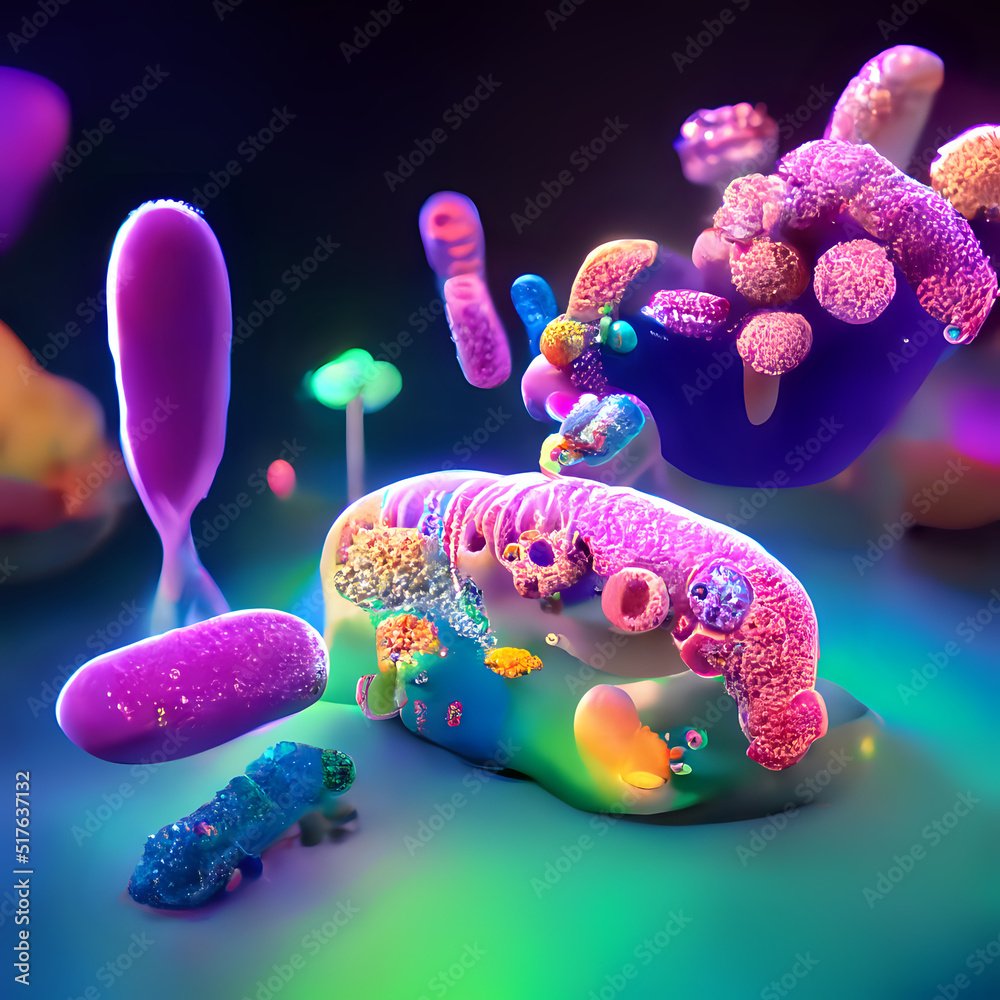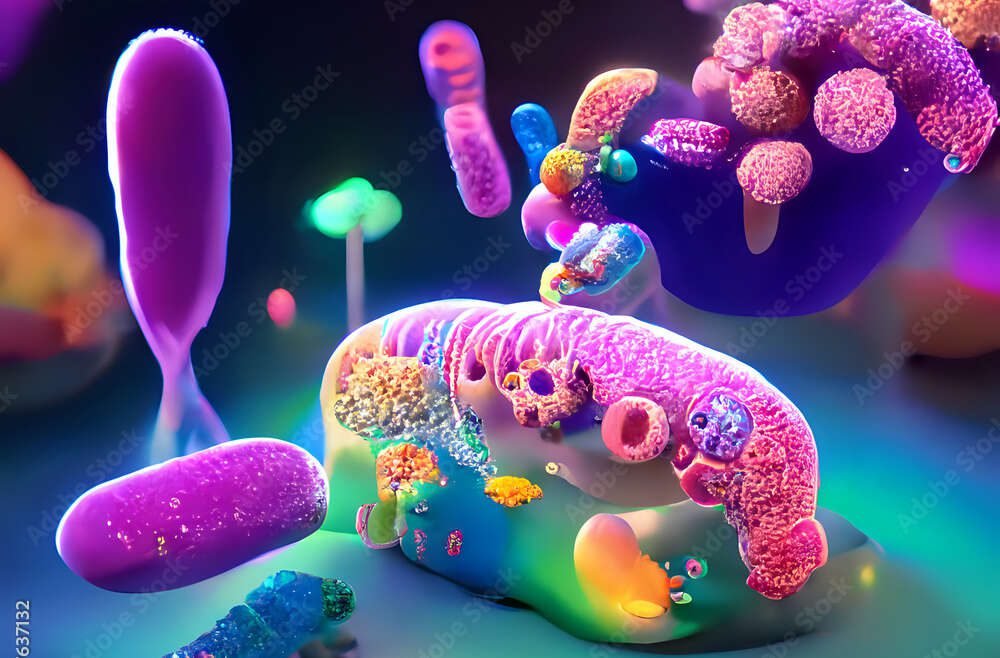What is the microbiome, exactly? Consider a congested city on a weekday morning, with people rushing to work or appointments. Consider this at a microscopic level to get an idea of what the microbiome inside our bodies looks like, which is made up of trillions of microorganisms (also known as microbiota or microbes) from thousands of different species. Among these are bacteria, fungi, parasites, and viruses.


In a healthy person, these “bugs” coexist peacefully, with the greatest numbers found in the small and large intestines, but also throughout the body. The microbiome is even referred to as a supporting organ because it plays so many important roles in promoting the smooth daily operations of the human body. Each individual has a completely distinct network of microbiota that is determined by their DNA. Microorganisms first enter a person’s body as an infant, in the birth canal and through the mother’s breast milk.
The infant’s exposure to microorganisms is solely determined by the species found in the mother. Later in life, environmental factors and diet can alter one’s microbiome, benefiting or putting one at risk for disease. Microbes, both beneficial and potentially harmful, make up the microbiome.
Most are symbiotic (beneficial to both the human body and the microbiota), but a few are pathogenic (promoting disease). In a healthy body, pathogenic and symbiotic microbiota coexist without conflict. Dysbiosis occurs when that balance is disrupted, which can be caused by infectious diseases, certain diets, or long-term use of antibiotics or other bacteria-destroying medications. As a result, the body may become more susceptible to disease.
What function do microbiota serve in the body?
Microbiota help the immune system by degrading potentially toxic food compounds and synthesising vitamins and amino acids such as B vitamins and vitamin K. The key enzymes required for vitamin B12 production, for example, are found only in bacteria and not in plants or animals.
Sugars, such as table sugar and lactose (milk sugar), are quickly absorbed in the upper part of the small intestine, but starches and fibres are not as easily digested and may pass lower to the large intestine. The microbiota, through their digestive enzymes, aid in the breakdown of these compounds. Short chain fatty acids (SCFA) are formed during the fermentation of indigestible fibres and can be used as a nutrient source by the body as well as play an important role in muscle function and possibly the prevention of chronic diseases such as certain cancers and bowel disorders.
Clinical trials have shown that SCFA is effective in the treatment of ulcerative colitis, Crohn’s disease, and antibiotic-associated diarrhoea. The microbiota of a healthy person will also protect them from pathogenic organisms that enter the body through contaminated water or food. Prevotella, Ruminococcus, Bacteroides, and Firmicutes are large bacterial families found in the human intestine. Peptostreptococcus, Bifidobacterium, Lactobacillus, and Clostridium are anaerobic bacteria found in the colon, which has low oxygen levels.
It is thought that these microbes prevent harmful bacteria from overgrowing by competing for nutrients and attachment sites on the mucus membranes of the gut, which is a major site of immune activity and antimicrobial protein production.
How can we ensure that we have enough of the right kinds of microbiota if they are so important to our health?
You may have heard of probiotics or used them in the past. These are either naturally occurring microbiota-containing foods or supplement pills containing live active bacteria that promote digestive health. Probiotic supplement sales exceeded $35 billion in 2015, with a projected increase to $65 billion by 2024.
While published research is conflicting, Dr. Allan Walker, Professor of Nutrition at Harvard Chan School of Public Health and Harvard Medical School, believes that probiotic supplements may be beneficial in certain situations. “Because your microbes aren’t as robust as they should be,” Walker explains. “Probiotics can have a greater impact on this massive bacterial colonisation process during these times.” He also mentions instances in which probiotics may be beneficial to the body, such as reducing the severity of diarrhoea after pathogen exposure or replenishing normal bacteria in the intestine after a patient has taken antibiotics. Walker, however, emphasises “These are all situations in which the intestine’s balance is disrupted. I don’t believe a probiotic will be very effective in improving the overall health of a healthy adult or older child who isn’t on antibiotics.” Probiotics are not regulated by the Food and Drug Administration in the United States because they are supplements rather than foods. This means that unless the supplement company voluntarily discloses quality information, such as bearing the USP (United States Pharmacopeial Convention) seal, which provides quality and purity standards, a probiotic pill may not contain the amounts listed on the label or even guarantee that the bacteria are alive and active at the time of use. Can a person’s diet affect their microbiota?
Diet, in addition to family genes, environment, and medication use, influences the types of microbiota that live in the colon. All of these factors contribute to the creation of a unique microbiome from person to person. A high-fiber diet, in particular, has an impact on the type and quantity of microbiota in the intestines. Dietary fibre can only be broken down and fermented by microbiota enzymes in the colon. Fermentation results in the release of short chain fatty acids (SCFA). This lowers the pH of the colon, determining the type of microbiota that can survive in this acidic environment. Some harmful bacteria, such as Clostridium difficile, are inhibited by the lower pH. SCFA research is expanding to investigate their wide-ranging effects on health, such as stimulating immune cell activity and maintaining normal blood glucose and cholesterol levels.
Inulin, resistant starches, gums, pectins, and fructooligosaccharides are examples of indigestible carbohydrates and fibres that support increased SCFA levels. Because they feed our beneficial microbiota, these fibres are sometimes referred to as prebiotics. Although prebiotic fibre supplements are available, many healthy foods naturally contain prebiotics. The highest concentrations are found in raw garlic, onions, leeks, asparagus, Jerusalem artichokes, dandelion greens, bananas, and seaweed. Fruits, vegetables, beans, and whole grains such as wheat, oats, and barley are all high in prebiotic fibres.
Be aware that consuming a lot of prebiotic foods, especially if you start eating them all at once, can cause gas (flatulence) and bloating. Individuals with gastrointestinal sensitivities, such as irritable bowel syndrome, should begin with small amounts of these foods to assess tolerance. Tolerance may improve with continued use, resulting in fewer side effects.
If you do not have food sensitivities, it is important to gradually transition to a high-fiber diet because a low-fiber diet not only reduces the amount of beneficial microbiota, but also promotes the growth of pathogenic bacteria that thrive in a lower acidic environment.
Probiotic foods contain beneficial live microbiota, which may alter one’s microbiome further. Fermented foods such as kefir, yoghurt with live active cultures, pickled vegetables, tempeh, kombucha tea, kimchi, miso, and sauerkraut are examples.


1 Comment
Add Comment